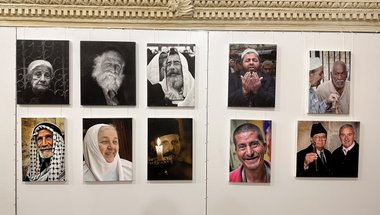The UOC (MP?) as Schrödinger’s Church: The (Non-)Existent Statute
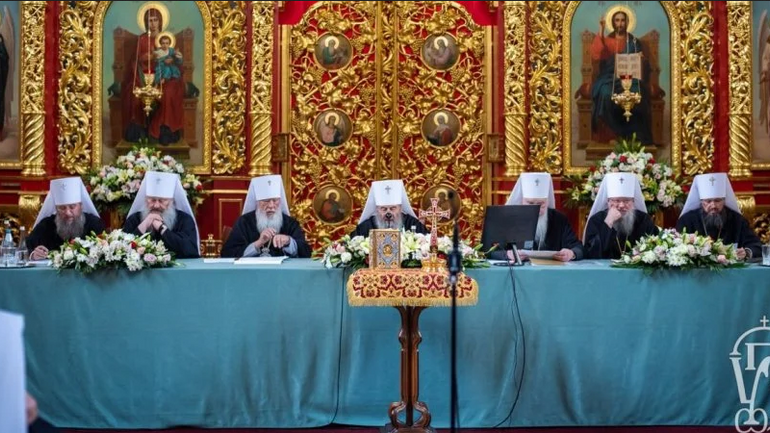
Currently, discussions are ongoing about a new statute for the UOC, which is claimed to have been adopted and to be in effect. However, no one has seen the final version, not even those who voted for the changes or those who are supposedly required to adhere to this new statute. At the same time, according to various statements from the hierarchs who voted for the new statute, the UOC has both severed all ties with the Russian Orthodox Church and, paradoxically (!), simultaneously remains an integral part of it. Moreover, some hierarchs are in no hurry to correct others.
All of this is reminiscent of Schrödinger's cat—the protagonist of Erwin Schrödinger's famous thought experiment. To recap, this poor imaginary cat is sealed inside a box. The box is equipped with a lethal mechanism that has a 50% probability of either activating or not. Thus, according to quantum mechanics, the cat exists simultaneously in two states—both alive and dead. Only by opening the box can you observe a single, definite state: either "the cat is dead" or "the cat is alive."
Similarly, it is not some imaginary "enemies of the Church" but rather the hierarchs of the UOC themselves who have placed the Church into this metaphorical lethal box, forcing it to exist simultaneously as both "dead" and "alive." That said, they are also surprised by society’s perception of the UOC, all the while conveniently blaming everyone but themselves for this "slander." However, it only takes a few simple questions to reveal that the ones “framing the Church” and “provoking” it are none other than the UOC’s own hierarchy, which adheres to a blatantly anti-Gospel approach, contrary to the Savior’s words: “Let your ‘Yes’ be ‘Yes,’ and your ‘No’ be ‘No.’” Anything more than this comes from the evil one" (Matt. 5:37). Let's ask these necessary questions.
1. What are the canonical options for the existence of the UOC?
Many refer to "autonomy and independence," but canon law does not recognize such a status. The canon law only provides for autocephalous churches, autonomous churches (which are part of other Local Churches, such as the Finnish Church within the Patriarchate of Constantinople), and exarchates (which are essentially unions of dioceses from a Local Church in a specific territory, such as the Belarusian Exarchate of the Russian Orthodox Church).
Additionally, the 1990 innovation by the Russian Orthodox Church, introduced for internal usage and known as self-governed churches, represents a form of canonical modernism. These churches are integral parts of the Russian Orthodox Church but possess a degree of autonomy in internal administrative matters. Such, for example, since 1990 are the UOC or the Orthodox Church of Moldova (since 1992). Among these, only an autocephalous Church—and only this one!—is truly independent and qualifies as a true Local Church. Anyone who claims otherwise is either indulging in wishful thinking, poorly informed about ecclesiastical canon law, or outright deceptive.
So, (a) is the UOC is autocephalous? Then why does the UOC Synod, held in Feofania on May 27, 2022, not mention this at all, nor does it include the term "break"? Why was no corresponding appeal made to either the Primates of the Orthodox Churches, the Primate of the Russian Orthodox Church, or even to their own faithful? Why has this term never been voiced by any of the hierarchs of the UOC at all?
(b) Is the UOC autonomous? Then state which specific Local Church it is a part of. Perhaps the Romanian or Orthodox Church in America? And once more, where was this change in status proclaimed?
(c) Or has the UOC not changed its status? Are the purported changes merely cosmetic and temporary adjustments on paper?
2. Where is the appeal to the Primates of churches to change the status of the UOC?
Hierarchs of the UOC have been claiming for years that the UOC is a "recognized Church." But for some reason, none of the Primates of the local churches mentions Metropolitan Onuphriy in the diptych. The issue is that no such entity as the UOC exists as a "Church" in the global Orthodox community, nor does Metropolitan Onufriy exist as a "primate" of a Church — whether local or autonomous. In the global Orthodox community, the UOC is nothing more than "dioceses of the Russian Orthodox Church in Ukraine." And it is precisely in this—and only this—status that the UOC is "recognized" in the world. It is worth noting how Ecumenical Patriarch Bartholomew repeatedly emphasized this long before the creation of the Orthodox Church of Ukraine, without any protests from the UOC. On August 2, 2000, in his response to the appeal from the Hierarchical Synod of the UOC (dated July 28, 2000), Ecumenical Patriarch Bartholomew noted that: (a) it was sent "in violation of the established procedure, where hierarchs communicate through their leadership" (i.e., the Patriarch of Moscow); (b) the appeal was received "at a meeting (and evidently not at a Synod or Council) of 35 bishops of Ukraine"; and (c) he addressed the Primate of the UOC as a simple hierarch, "Your Eminence," rather than as the Primate of a Church, "Your Beatitude." Similarly, other Local Churches also regard the UOC as the “Russian Orthodox Church in Ukraine.” For example, Hierarch Irinej (Bulović) of the Serbian Orthodox Church, who is known to be a supporter of the Russian Orthodox Church, also reminds that the UOC "remains under the jurisdiction of the Moscow Patriarchate."
So why does the UOC not wish to inform the Primates about such a significant event in the life of its own Church and the global Orthodox community as the emergence of a new Local Church? Why has Metropolitan Onufriy, if he truly considers himself the Primate of a Local Church from now on, not sent official letters to the Primates of other Churches about the change in the status of the UOC and the establishment of its autocephaly, as tradition dictates? War is by no means an obstacle to such correspondence. And it's not about forgetfulness, modesty, or anything else. This might be understandable if it weren’t for the fact that the UOC has consistently and regularly sent letters of complaint to numerous organizations worldwide about the Ukrainian government and the latest transfers of parishes to other jurisdictions. Thus, if no communications have been made following this extremely significant event, might it suggest that no real changes have actually taken place? This means that both Metropolitan Onufriy and the hierarchs of the UOC seem to be quite content with being perceived by the global Orthodox community as simply the "Russian Orthodox Church in Ukraine."
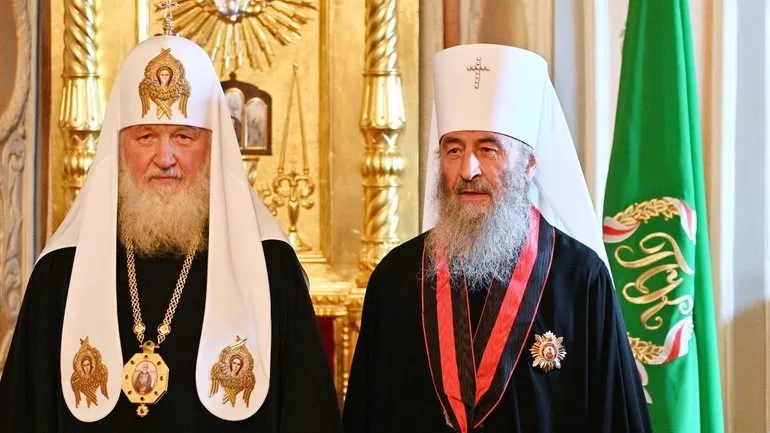
3. What is the official interpretation of the amendments to the charter by the UOC speakers?
Thus, neither the Primate of the UOC nor any bishop has clarified that the UOC has become autocephalous, as it has not and does not intend to. Claims about being "autocephalous" or "more than autocephalous" seem, quite frankly, like saying, "a belly larger than that of a pregnant woman."
At the same time, there are numerous official statements affirming the lack of actual changes. Firstly, the revised statute of the UOC states in its first article: "The UOC is autonomous and independent in its administration and structure according to the Decree of Patriarch Alexy II of Moscow and All Rus dated October 27, 1990." This decree explicitly states that "The UOC is united with global Orthodoxy, i.e., the One, Holy, Catholic, and Apostolic Church, through our Russian Orthodox Church." By the way, any deviation from the provisions of this Charter could be another reason for the potential cancellation of these provisions in the future.
Secondly, UOC spokespeople themselves affirm that no change in status has occurred and that they remain an integral part of the Russian Orthodox Church. For example, Metropolitan Klyment (Vecheria), Head of the Synodal Information and Education Department of the UOC, explains: "The UOC has been independent and self-governing in its administration since 1990. The Council re-examined the documents that defined the UOC’s status over the past 30 years and emphasized that its status is one of independence and self-administration. This formulation aligns with the document issued by Patriarch Alexy II in 1990. The Council merely reaffirmed this status, and we continue to maintain spiritual unity not only with the Russian Orthodox Church but also with other Orthodox Churches." Similarly, Metropolitan Meletiy (Yehorenko), a permanent member of the UOC Synod and head of the Department of External Church Relations, explains in a letter to the head of the Russian Orthodox Church Outside Russia that the UOC "remains part of the Russian Orthodox Church." Even more explicitly, Metropolitan Pavel (Lebid), another permanent member of the UOC Synod and the abbot of the Kyiv-Pechersk Lavra, states: "All the changes we made do not alter anything...”
None of these statements have been contested or corrected. Outrage seems to arise only when someone else in Ukraine repeats these statements made by UOC hierarchs verbatim. Suddenly, this is perceived as "slander and provocation by the enemies of our Church."
Interestingly, two other permanent members of the UOC Synod, Metropolitan Hilarion of Donetsk (Shukalo) and Metropolitan Lazar of Simferopol (Shvets), have outright refused to acknowledge even these symbolic changes on paper. Other reports suggest that Metropolitan Agafangel of Odesa (Savyn) and Metropolitan Pakanych, the Managing Director of the UOC, also did not sign. All of these individuals are permanent members of the UOC Synod. The silence from UOC head Metropolitan Onufriy only confirms agreement with the UOC spokespeople regarding this particular interpretation.
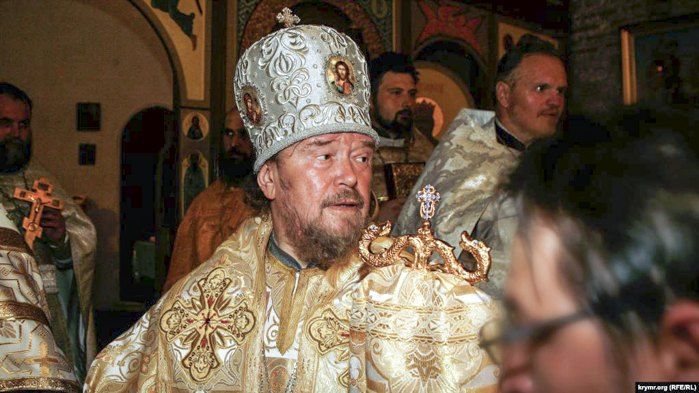
Thus, among the nine permanent members of the UOC Synod, two metropolitans and the UOC spokesperson assert that nothing has changed, and the UOC remains an integral part of the ROC, while at least two (or possibly four) have shown disagreement with the decisions made. The others prefer not to clarify or refute anything. This results in quite an interesting arithmetic.
In this way, the UOC hierarchs have effectively created a Schrödinger’s statute. To one audience (Ukrainian), the hierarchs claim that the UOC is "completely independent" and has severed all ties with the ROC, expressing outrage when this is questioned. To another audience (Russian and occasionally their own flock), the same hierarchs state that "nothing has changed" and that "the UOC remains an integral part of the ROC." Such a stance could be seen as a form of duplicity. It's almost like a line from a children’s song: "On one side, we stay at home, on the other side, we are traveling."
An interesting detail in these statutory discussions is that even six months after the Synod, a portrait of Patriarch Kirill continues to hang prominently in the Synodal Hall of the UOC as if nothing has changed.
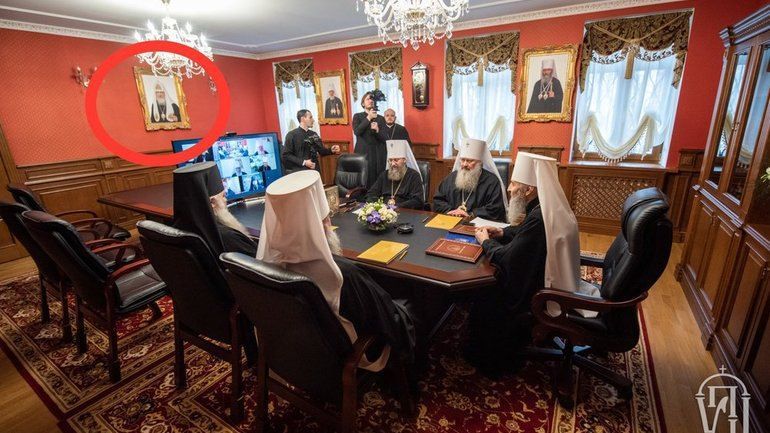
And by the way, claims such as “we are finally truly independent from Moscow” reveal a straightforward fact: all previous long-standing statements by UOC hierarchs about “absolute independence and autonomy from Moscow” were deliberate falsehoods, intended to mislead the public. Same as the earlier claim of being “absolutely independent” was not genuine, the current claim of being “truly independent” may well be just as unsubstantiated.
4. Where is the formal communication to the ROC about the break or any changes?
Another confirmation of the lack of real (as opposed to merely paper and temporary) changes is the absence of any formal communication to the ROC regarding a break or changes. There has been no mention of UOC bishops or clergy withdrawing from ROC commissions or synodal presence. For instance, the ROC Synod on October 13, 2022, extended the term of Metropolitan Ionafan (Eletsky) on the Commission for Old Believer Communities without any protest from him.
Vladimir Legoyda, head of the ROC Synodal Department for Church and Media Relations, confirmed that no formal requests or notifications from the UOC to the ROC regarding any changes have been received. Consequently, the ROC naturally continues to view the UOC as an integral part of its structure, in line with the same Gramota from Patriarch Alexy II referenced by the UOC Synod. This understanding aligns with the ROC hierarchs' view that the decisions made have not changed anything fundamentally but merely reaffirmed the UOC's long-standing status. Metropolitan Hilarion (Alfeyev) of the ROC noted at the time: “The UOC Synod confirmed the status that this Church has had since 1990 when it received the Tomos of self-governance from His Holiness Patriarch Alexy II of Moscow and All Rus.”
It’s worth recalling that the ROC has never hidden that it regards the UOC as part of the ROC. Metropolitan Hilarion (Alfeev) has repeatedly stated: “The Ukrainian Orthodox Church of the Moscow Patriarchate is part of the Russian Orthodox Church” and specified that the territory of Ukraine “is within the boundaries to the Russian Orthodox Church.” Russian politicians also viewed the UOC in this way. Kremlin spokesman Dmitry Peskov always referred to the UOC exclusively as the “Russian Orthodox Church in Ukraine.” Similarly, President Putin has long spoken of the “ROC in Ukraine” or the “Russian Orthodox Church of the Moscow Patriarchate in Ukraine.” Thus, it is Russian politicians (not “Ukrainian nationalists”) who coined the term “ROC in Ukraine,” and for decades there have been no protests, outraged responses, or attempts to correct such designations from the UOC's leadership.
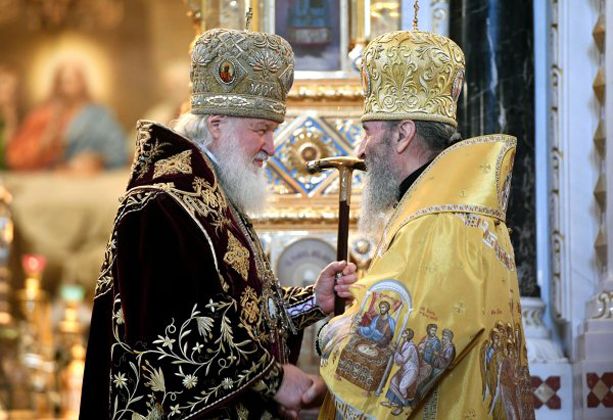
Moreover, UOC hierarchs have readily agreed with the assertions of unbreakable unity with the ROC or ROC in Ukraine when these sentiments were expressed by Russian politicians. Conversely, identical statements from Ukrainian politicians suddenly sparked outrage and were perceived as offenses. For instance, the long-serving administrator of the UOC, Metropolitan Antony (Pakanych), emphasized the connection with the ROC at the ROC’s Hierarchical Synod in Moscow: “The UOC maintains prayerful and canonical unity with the ROC, through which it is in unity with all Local Orthodox Churches.” Yet, the same hierarch visibly expressed outrage at home, stating: “Politicians, with the help of schismatics, want to rename us from the Ukrainian Orthodox Church, which we are, to the ‘Russian Church in Ukraine,’ trying to make us foreign.” Similarly, the head of the UOC's Representation at international organizations, Bishop Viktor (Kotsaba), claims that associations of the UOC with Moscow are nothing more than “manipulations” and “dragging the UOC into geopolitical struggles.” This exemplifies a form of doublethink as described by Orwell.
5. Where are the UOC’s protests regarding the annexation of its dioceses by the ROC?
The position of "remaining an integral part of the ROC" explains why the UOC not only failed to protest the annexation of three of its dioceses by the ROC but also seemed to accept it without objection. On June 7, 2022, the ROC Synod decided to "bring the Dzhankoy, Simferopol, and Feodosiya dioceses under the direct canonical and administrative jurisdiction of the Patriarch of Moscow and all Rus'", effectively annexing these dioceses without any prior consultation or agreement with the UOC. This reflects a longstanding attitude of the ROC towards the UOC. For instance, during the ROC Synod on September 14, 2018, when discussing the UOC’s situation, Patriarch Kirill directly informed the "absolutely independent" UOC Primate, Metropolitan Onufriy of Kyiv, that: "We will have a discussion at the Synod and then, Your Beatitude, we will inform you of the results." This time, no such information was provided.
Was there even a hint from the “more-than-autocephalous” UOC or any of its hierarchs condemning this raiding? Such an absolutely calm reaction to the seizure of over 600 parishes and a dozen monasteries clearly contrasts with the reaction to any voluntary transition of a single parish to the OCU. In those cases, immediate protests, rallies, letters to various organizations in Ukraine and beyond, and, of course, immediate prohibitions of priests and rhetoric about “inciting religious hatred” and “Judas traitors” appear. For example, there was no delay in curses from Metropolitan Feodosiy (Snehiriov) directed at priest Roman Lychko, who transitioned to the OCU in March: “it would have been better for you, Judas, traitor, if you had never been born in this world.” However, in the case of the raiding of entire dioceses, the UOC episcopate did not notice any Judases or traitors. Interestingly, Metropolitan Lazar of Simferopol remains a permanent member of the UOC Synod. So, did anything really happen?
6. Why has the updated UOC Statute still not been published?
If the statute has already been adopted, approved, and signed, it would be logical to publish it immediately. Especially to end speculation and "slander." Delaying its publication despite requests does not make much sense at first glance. However, there is a certain logic to it.
First, for any changes to officially take effect, the document must be officially published. Since there is no official document, there can be no official requirement to implement it. How can you implement something that no one has seen? Any accusations can always be answered by saying that the original wording is completely different or even non-existent.
Second, an unpublished document is always easier to "replay," supplement, modify, or even cancel. For example, citing non-compliance with the Synod’s procedures or “pressure from the Kyiv junta” and “enemies of holy Orthodoxy.” Moreover, such phrases are already being heard, including from the UOC episcopate. For instance, Metropolitan Luka of Zaporizhzhia (Kovalenko) hints: “The Church is primarily under pressure from society. Secular society, which is hostile to the Church itself, has no connection to it and does not understand its internal affairs.” Essentially, he is echoing the Moscow understanding of these changes as having occurred under the pressure of the authorities, and thus being forced and temporary.
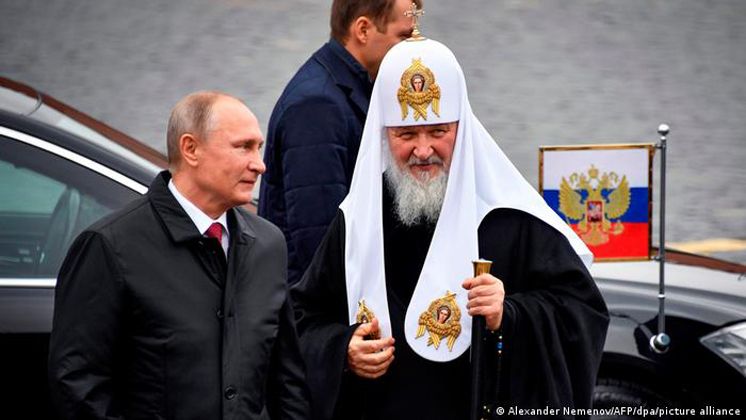
In a similar vein, Patriarch Kirill stated: “Undoubtedly, the same spirits of malice from the heavens have rallied against our Church, seeking to divide the Orthodox people of Russia and Ukraine. […] We fully understand that His Beatitude Metropolitan Onufriy and the episcopate must act as wisely as possible today, so as not to complicate the lives of their faithful people.” Therefore, it is quite probable that the planned temporariness (“due to pressure from Kyiv authorities”?) and the insincerity of these changes can explain why the updated Statute of the UOC has still not been officially published even six months after the Council.
Thirdly, the UOC hierarchy is well aware of its own flock and may fear a rebellion among its congregation, which is "trained" to profess the "dogma" of the “God-given and indissoluble unity of the triune people.” This needs to be addressed separately.
7. Who educated the flock in the dogma of the “God-given unity of the triune people”?
When Ukrainian society considers the UOC pro-Russian, this somehow causes outrage among UOC speakers and is perceived as slander and “dislike for our Church.” Excuse me, but it was the hierarchy and speakers of the UOC (not imaginary “enemies of the Church”) who systematically and for decades educated their own flock in loyalty to the "Russian world," for which “one must stand until the last breath,” and that separation from Moscow is a “rupture of Christ’s seamless robe.” No public refutations or apologies from the UOC hierarchy for such sermons have occurred.
Thus, the senior member of the UOC Synod, long-time head of the Synodal Educational Committee, Metropolitan Agafangel (Savin) of Odesa, for decades attempted to dogmatize the idea of unbreakable unity with Moscow in almost every report and interview. And not only ecclesiastical unity. He explained that the Church's task is "to preserve and restore the sacred unity, which has been thoughtlessly violated by politicians, the God-ordained spiritual, historical, cultural, and national unity of the lands of the Russian World. This provokes irritation among nationalist politicians in Ukraine, who seek not only to sever the unity of the peoples of Ukraine and Russia but also to tear apart the unsewn robe of the Church, to break the centuries-old unity of the foundation of our nations’ existence." He also explained: "We call Russia the Third Rome, as the guardian of Orthodox statehood." "The separation of the UOC from the Moscow Patriarchate will be a blow to the stronghold of undamaged Orthodoxy of the holy fathers, which the enemies of the Church are waiting for […]. The unity of the UOC with the Mother Church, the Russian Orthodox Church, is an undeniable truth that does not tolerate any changes. Any attempt to separate from the ROC will be a god-opposed schism. We will always be with the ROC […] We are ready to follow this path of unity with the ROC to the end. […] Even if the entire Church wants to become independent, I will oppose—even if the Council decides otherwise. […] The people of God will never renounce the ROC. Our goal is to fulfill the hopes of the Church’s people and unite all the forces of the Church and society that are aimed at the sacred unity with the Russian Church." Indeed, the UOC truly united all the societal forces aimed at unity with Moscow, forming the backbone of collaborators. By the way, this "confessional" feat of Bishop Agafangel in the name of unity with Moscow was described by his entourage as "an example of daily co-crucifixion with Christ."
In support of these new "dogmas," various elders were also used. In almost every church shop of the UOC, there were brochures with pseudo-quotes attributed to St. Lavrentiy of Chernihiv: "Just as it is impossible to separate the Holy Trinity: the Father, the Son, and the Holy Spirit – one God – so it is impossible to separate Russia, Ukraine, and Belarus." It is irrelevant that these words were attributed to St. Lavrentiy in the 1990s against the backdrop of the fight against the autocephalous movement in Ukraine. Also circulated were the words of Hieroschemamonk Ion (Ignatenko): "There is no separate Ukraine and Russia, but one Holy Rus. And the enemies decided to divide us to destroy Orthodoxy in Little Rus. But the Lord will not allow this."
The will of the pseudo-elder Zosima (Sokur) was widely promoted in the UOC: "Strictly adhere to the ROC and the Holy Patriarch of Moscow and All Rus. In the case of Ukraine's departure from Moscow, regardless of whether it is autocephalous, unlawful, or 'lawful,' automatically sever the connection with the Metropolitan of Kyiv. In the event of a departure from the unity of the ROC, the ruling hierarch no longer exists, monasteries fall under the jurisdiction of the Holy Patriarch of Moscow and All Rus."
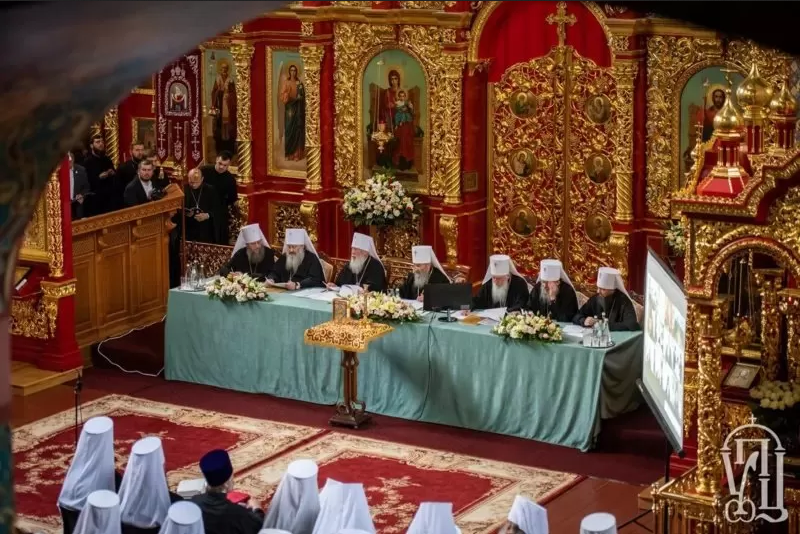
In the UOC, gatherings of clergy and believers in the dioceses were periodically held to emphasize "unity with the Russian Orthodox Church," and processions were organized with a similar purpose. There was even a flash mob involving the renewal of oaths and support for unity with the ROC, which took place across the UOC dioceses.
Some hierarchs even celebrated this unity in poetry. "Oh, Rus! You are the sign of the divine Trinity on this earth!" exclaims Metropolitan Ionafan (Yeletsky) of Tulchyn, likening the "unity of three nations" to the Holy Trinity. Among the poems of Metropolitan Ionafan, there is also this expression of love:
Great God, one God,
Keep our Russia forever!
You are our holy stronghold,
Sovereign of all,
God, preserve Russia!
Therefore, it is quite symptomatic that most UOC believers perceive the idea of "sacred unity" with Russia almost as a dogma. In this context, the results of a survey by the Rating Group in July 2021, that is, seven years after Russia's attack on Ukraine, annexation, and occupation, are quite telling. When asked, "Do you agree with Russian President Putin's statement that Russians and Ukrainians are one people?" 66% of UOC believers agreed with the dictator's statement. The picture among the believers of the PCU is directly opposite: 65% disagreed. Among Greek Catholics, disagreement with this statement is even higher—88%.
Thus, it is not surprising, but rather expected, that the “devout flock” of the UOC, having been raised on such sermons for decades and on the dogmatization of “sacred unity with Moscow,” might view any attempt to distance itself from Moscow as a “betrayal of Orthodoxy” and a “godless schism,” and, according to long-standing calls, might “sever ties with the Metropolitan of Kyiv,” considering him a heretic and Judas. There was already a similar precedent. In 2013, monks of the Holy Dormition Sts. Nicholas and Basil Monastery of the UOC accused their primate, Metropolitan Volodymyr (Sabodan), of betrayal and compared him to Judas because he signed the “Appeal of the Churches and Religious Organizations to the Ukrainian People ‘Regarding Ukraine's Eurointegration.’” The signatories claimed that “the public position of the faithful of the UOC MP is directly opposed” (to Eurointegration) and called to preserve “the sacred unity with Russia.” Interestingly, the abbot of this monastery was the permanent member of the UOC Synod, Metropolitan Ilarion (Shukalo). And again, there was a telling silence from both the abbot and the UOC Synod.
Given all these facts, it is not surprising (but rather the opposite) to hear the testimony of the well-known archimandrite of the UOC, Theognost (Pushkov), that after the changes made at the UOC Synod in May, there began a departure of believers from Metropolitan Onufriy and the Lavra to the Holy Dormition Sts. Nicholas and Basil Monastery in Kyiv, which remained loyal to Patriarch Kirill of Moscow and where he is commemorated. The question now is how to commemorate “Onufriy the Apostate.”
* * *
Instead of pulling their own Church out of the deadly Schrödinger’s box, the UOC leadership has taken even more enthusiasm in cramming it further inside, marveling at the result and blaming “enemies” for it. However, one should not seek enemies where none exist. It is only necessary to abandon the habitual and comfortable, yet utterly infantile, self-righteousness and to look at the result of one's own long-standing actions and words, one's own hypocrisy and double-mindedness. One should see what they have led to, how many decent brothers have been betrayed, and be horrified that all this was done consciously and with one’s own hands. Then answers to the question “why are we perceived this way” may come. It is worth recalling how many warnings were given along this path and how easily they were dismissed as “hostile.” Perhaps tears of repentance will come. But now, the further we go, the more the Schrödinger’s Church is dead rather than alive. Unfortunately.








